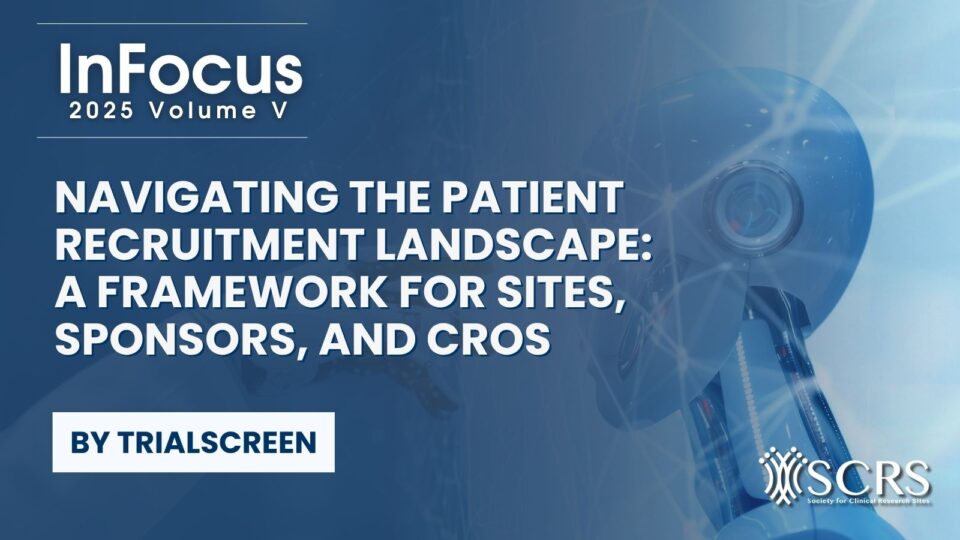Protocol Pitfalls in Clinical Research: Six Mistakes That Cost Science and Sanity

Clinical research is complex, and rightfully so. What we do is often uncharted and difficult. Managing science, regulations, organizational and human behavior, and much more – it’s a delicate and serious balancing act.
The central navigation tool of a clinical trial, at least in theory, is the protocol. Trial design may appear simple; however, with the complexity of operationalizing clinical research, it often requires a myriad of supporting documents, manuals and brochures, and other homegrown tools amounting to the Rosetta Stone. Translating and transcribing a clinical research protocol is not for the faint of heart. Ask any research coordinator. Whether it’s reconciling conflicting information, navigating a monstrosity of footnotes, or sifting through too many layers of detective work, protocols and their accompanying manuals are complex and do little to prevent deviations.
During six years of analyzing over 1,250 protocols grade I-IV, RWE, and beyond, our Senior Clinical Program Manager, Kathryn Gentz, gleaned some common themes regarding complexities, deviation risk, and inefficiencies. Here are six mistakes she says typically lead to confusion, complexity, and unnecessary costs in clinical research.
Protocol Mistake 1: Footnotes, Footnotes, Footnotes
Love them or hate them, footnotes are a ubiquitous tactic for operationalizing a research protocol because, ironically enough, the Schedule of Assessments (SOA) actually does an inadequate job of laying out a set schedule. Footnotes are intended to describe further details and exceptions that cannot be practically incorporated into or represented by an SOA. There are many flavors of footnotes, and we have become more creative in how we stitch in ancillary pieces of information to the SOA. Here are three flavors of discrepant footnotes:
- Footnotes often conflict with the SOA itself. For example, in extension/long-term follow-up visits, there may be a visit in the SOA labeled “q6 month,” but activity “T” only needs to occur “q12 month.” But because of the way that the visits are set up in the SOA, the footnote reveals a nuance that could be solved by simply breaking out the q6-month visit into a q6 and q12. In this case, the footnote adds critical information, but it isn’t delivered in a way that is preferential to someone operationalizing the trial at the site level.
- Footnotes often come into play too late. The true order of operations is often revealed in footnotes; while a veteran CRC may manage reordering tasks with less difficulty, a new-to-the-game/study, stressed-out CRC can easily miss a detail like this, creating panic or delays in front of a patient and reducing confidence.
- Footnotes are a never-ending hamster wheel. Protocols and ancillary manuals are notorious for pointing to one place that points to another and then another. Oftentimes, footnotes create a hamster wheel effect, sending CRCs round and round to find information that’s critical to carrying out a protocol as the sponsor intended.
Protocol Mistake 2: Not so elementary, dear Watson!
Piecing together ancillary documents is detective work.
CRCs wear many hats. While detective skills are a great characteristic for anyone in research and healthcare, they shouldn’t be the core skill set of a study coordinator. Unfortunately, with most protocols, it is. Here is an example:
LA3. Creatinine clearance ≥ 40 mL/min as assessed by the Cockcroft-Gault equation {Cockcroft 1976}
This excerpt calls the CRC to a different part of the protocol from a footnote, yet ultimately does not give them the information they need. The best way to solve this would be to serve up the actual equation at the time that the CRC needs it, removing complexity and creating efficiency.
Reflecting on Mistakes 1 and 2, it’s interesting that neither of these problems are inherently ‘complex’ to solve. The science itself is much more complex. The solution is simple: provide clarity at the right place at the right time.
Protocol Mistake 3: Does the Perfect SOA Exist?
You would never combine your whole week of dinner recipes into one big recipe; rather, you’d have seven recipes for seven dinners. Protocols are no different. Each visit should be treated like its own recipe, with only the ingredients and instructions required to execute that meal, no more, no less. One of the many features of our Site Hub product creates visit-specific overviews, allowing the coordinator to clearly see all of the relevant elements they need, including the technology, to execute a visit while the patient is in front of them.
There is a lot of nuance in even one research protocol. Now consider: CRCs are running Visit 3, Protocol A at 9 am, and then Visit 5, Protocol B at 11 am, and then Visit 1, Protocol C at 3 pm. The next day, it’s all different. Visits and patients for Protocol D may be months or even years apart. It is impossible for CRCs to keep all these visits and protocols straight, not because they are incompetent, but because they are overwhelmed by confusing content and constantly switching between protocols. They deserve (and need) the right tools to run a protocol the way it was intended.
Protocols that require deciphering ultimately hurt all of us: sponsors, sites, patients, and everyone who stands to benefit from the investigational product or device in the future. We risk losing time, money and, ultimately, scientific progress in the industry. Clinical research has a lot of stakeholders and requires all players to do their part in a smooth, timely manner. We are all part of clinical research for the same end goal: to efficiently bring the best medicines to market through rigorous scientific execution.
Protocol Mistake 4: The “Choose Your Own Adventure” Eligibility Criteria
Some protocols are written like mystery novels. You start reading an inclusion criterion, then jump to an exclusion note, which leads you to a footnote, which refers to an appendix. By the time you’ve assembled the full eligibility puzzle, the screening window is over — or worse, a patient was enrolled incorrectly. Queue your favorite protocol deviation soundtrack.
Clear eligibility criteria aren’t just a nice-to-have — they’re essential for reducing expensive screen failures and avoiding protocol deviations. When criteria are scattered, missing, ambiguous, or contradictory, sites are forced to interpret, guess, or delay enrollment. Each of those paths wastes time and increases risk for site and patients alike.
What’s interesting is that at first glance, what might look like a recruitment issue is actually a more complicated screening, enrollment, and conduct issue. Sites will deprioritize enrolling a protocol if it’s more complex than other competing at their site.
Protocol Mistake 5: Vague Timing Windows
There’s a big difference between “Day 1” and “within 7 days of Day 1.” And yet, protocols often toss around these phrases without enough context or consistency. This creates confusion around visit windows, lab timing, dose administration, and more.
A coordinator shouldn’t need to build a Gantt chart to schedule a patient visit. Precision in protocol language matters. Every visit and procedure should have a clearly defined window — and if flexibility is allowed, it should be explicitly stated with examples, not buried in the third-degree footnote.
Here’s a real-world example we’ve seen. Screening activities could be completed as late as 10 pm on the day of screening, but because of lab work processing times, Day 2 should have been 24 hours after Day 1 activities completed— but that wasn’t noted explicitly in the protocol. This created an enormous amount of guesswork and 22 unnecessary emails among the entire study team.
This lack of clarity and examples introduces needless risk that could jeopardize the science and, more importantly, the safety of the patient.
Protocol Mistake 6: Layered Protocol and Supporting Document Versions That Don’t Talk to Each Other
Let’s say you’re working with version 6.0 of a protocol. You assume the SOA reflects that version…but the lab manual? That’s still referencing version 5.2. The ICF was updated, but only in version 5.9. Suddenly, you’re running three timelines, ending up in dead ends and creating a web of references among your study documents.
This is more than an annoyance. Layered, non-synced versions create real deviation risk. One CRC told me she didn’t know a procedure had been removed in an amendment because the site training hadn’t caught up. The result? A completely unnecessary procedure and an unhappy patient.
Protocols are our playbook. But if the playbook keeps changing, contradicts itself, or buries the rules, even the best players are set up to fail. CRCs, study nurses, investigators — they all deserve better.
We don’t need perfect protocols. But we do need cleaner, simpler, and better-connected ones. Because the cost of getting it wrong isn’t just a busted workflow — it’s a delay in getting effective treatments to patients who need them, introducing enormous financial risk, and needlessly risking patient safety.
Contributor
Kathryn Gentz, Senior Clinical Program Manager, ProofPilot



